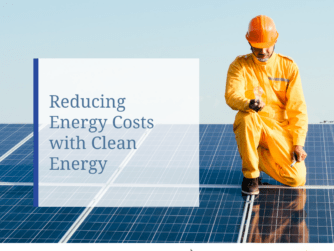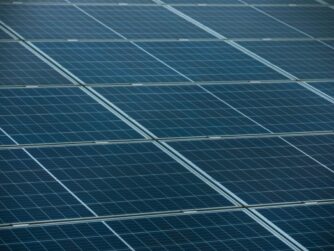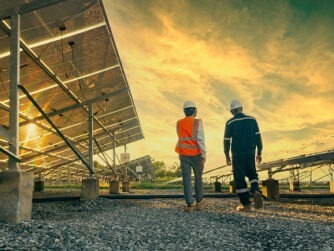1. Choose Energy Star appliances and windows whenever possible to increase energy efficiency and save you money without compromising performance.

2. Manage your thermostat wisely. Turn your thermostat up during the summer/ down during the winter when you’re out of the house, when you’re on vacation, and even at night to save energy and money. Cool or heat in moderation– Keeping your air conditioner at 78º in the summer or your heat at 68º during the winter is a good starting point to balance performance and comfort. Remember: it’s the difference between the temperature of the outdoor and indoor air that makes you feel cool, not the absolute temperature of the air in your home.
3. Use a programmable thermostat. If you don’t have one, get one. It will pay for itself in as little as one season. Just a few degrees will make a noticeable difference in your bills. (This is different if you have an air source or geothermal ground source Heat Pump – Contact Us for more details)
4. During the summer, raise the temperature when no one is home. Lower the temperature during the winter. This is another way a programmable thermostat pays for itself. Why cool or heat the house if no one’s around to enjoy it? Keep your shades pulled down and the doors closed so your AC doesn’t have overwork when you come home during the summer – let the sun in during the winter. (With a smart thermostat, start up your cooling/heating system from your cell phone a few hours before you arrive!). This is different if you already have either an air source or geothermal ground source Heat Pump– Contact Us for more details.
5. Take advantage of zone cooling & heating. Why pay to cool or heat rooms you aren’t using? If you have a ductless system, use air handlers only in occupied rooms. If you have vents, try selectively shutting down vents in unused areas – especially for AC with ones that tend to be cool anyway (your basement is a perfect candidate). Your central AC and heating system can be equipped with zone controls, too– Contact Us to learn more.
6. Maintain your AC & Boiler or Furnace– Did you know the efficiency of your air conditioner, boiler and furnace could drop five percent or more in a single season if it’s not properly maintained? Stay on top of ROUTINE ANNUAL MAINTENANCE– resist the temptation to skip a year. Having your HVAC system inspected, cleaned, and serviced at least once a year helps ensure it’s working at maximum efficiency.
7. Check ductwork. You can lose one third or more of your heating & cooling that your system produces before it ever reaches the vents! Improperly installed or poorly maintained ducts can rob you of significant efficiency. If you’ve had your system for a while, duct sealing could be a great investment. Cleaning out all the dust and dirt that has accumulated makes things easier for both your lungs and your heating & cooling systems. You’ll save energy and may even increase the system’s lifespan.
8. Seal any air leaks. Caulking, sealing, and weather-stripping cracks and openings around your windows, doors, or any other openings can help keep you from heating & cooling the outdoors—saving you energy and money, and keeping you more comfortable.
9. Clear obstructions. Don’t heat or cool your chair – condition the air! Rearrange your furniture to make sure it doesn’t block your vents.
10. Replace your air filters to improve airflow and increase the efficiency of your air conditioning and air heating systems. Even simply replacing your air filters can lower energy consumption by up to 15%.
11. Install window reflectors during the summer– Why compete with solar heat? Minimize the greenhouse effect with light-reflecting window treatments or coverings such as blinds, shades.
12. Install plastic window insulation during the winter. It’s the air space between the window and plastic that will keep the heat from escaping – and stop the cold drafts.
13. Use ceiling fans. Circulating air feels cooler (think of a summer breeze), so you can run your AC a little warmer with no change in comfort. This can save you hundreds of dollars in a cooling season. A slow fan in a high ceiling can also move the heat down during the winter, too. Change the direction of your ceiling fans for each season. Rotate counter-clockwise in the summer so that they push cool air down— keeping your home cooler and allowing you to ease up on the AC. Rotate to clockwise to move the hot air from the ceiling around the room in the winter.
14. Turn down your water heater. Water heating accounts for 18% of the average family’s utility bill. Turning down the temperature of your water heater to the warm setting (120°F) can help reduce your energy consumption.
15. Use cold water for your laundry to reduce energy usage.
16. Hang dry your clothes as an eco-friendly alternative to the dryer. It takes the same amount of energy to dry – but using the sun doesn’t cost you a dime!
17. Avoid using your oven in the summer to help keep your whole home cooler. Use your microwave, toaster oven, or grill whenever you can.
18. Switch to energy-efficient lighting. LED bulbs use at least 75% less energy and last 25 times longer than incandescent bulbs. 90% of the energy consumed by an incandescent bulb creates HEAT, not visible light. Swapping out your incandescent bulbs for LEDs can save a ton of energy and money over time. LEDs also emit very little heat, so they can help keep your home cooler in the summer, too.
Small steps like these can make a big difference in your home’s energy consumption. Once you’ve cut back on your energy use, make sure the energy you do use comes from Clean, Green Sources.








